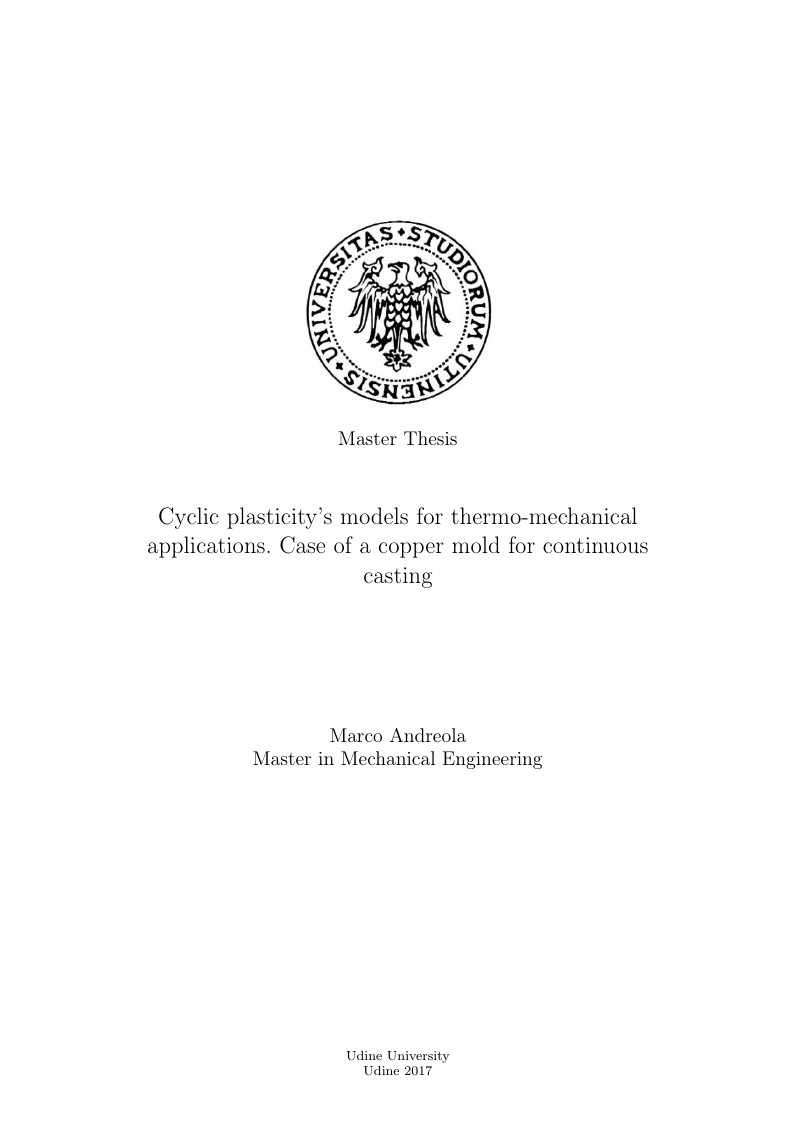
Cyclic plasticity's models for thermo-mechanical applications.
Författare:
Marko
Last Updated:
för 9 år sedan
Licens:
Creative Commons CC BY 4.0
Sammanfattning:
This master thesis aims to investigate and to assess the fatigue life of a component that undergoes cyclic thermal loads. This study will consider different approaches through the use of different material models, providing a final comparison of the assessed fatigue life. The case study is a cylindrical copper mold used for continuous casting of steel; in order to work at high temperature the mold is properly cooled, but nevertheless high stresses arise due to the huge thermal flux and its uneven distribution.
The beginning of this work is focused on understanding theories and models available in literature in order to implement data in a finite element software. A comparison of two software (Ansys and Marc Mentat) is carried out, with the purpose of verifying experimental data coming from another work [3]. Subsequently we use Marc Mentat to define a coupled thermal-mechanical analysis, and we perform it using a combined model. A huge computational time is required to get the solution, so other models were exploited in order to save time, and the variation of the obtained solution was evaluated. Several simulations are performed for reaching stabilized conditions, from where strain data will be used to define fatigue life through the number of cycles to failure.
The subsequent chapter takes care of this last concept, giving a brief explanation of fatigue and using data coming from previous simulations for assessing fatigue life.
A final comparison is provided with the purpose of finding a trade off between the solution’s reliability and the time employed. In the appendix the macro used for the computed simulations are attached.

\begin
Discover why over 20 million people worldwide trust Overleaf with their work.